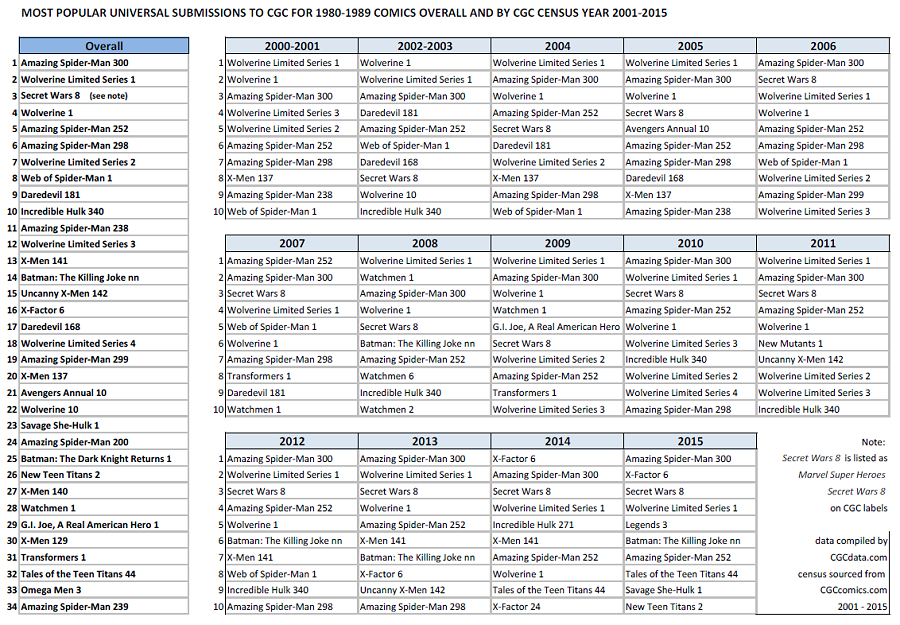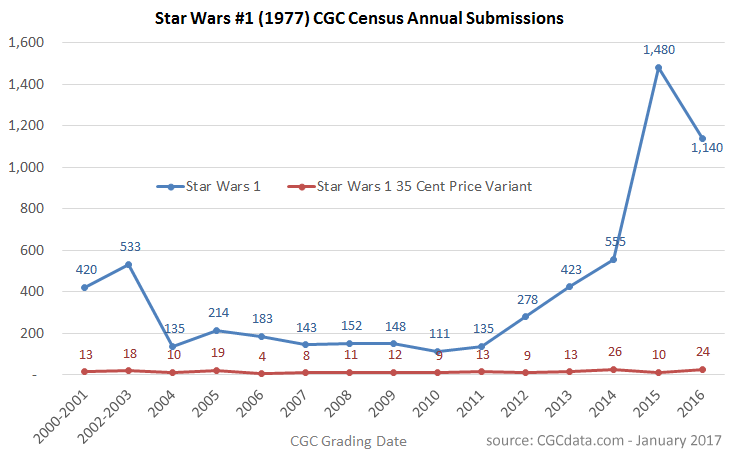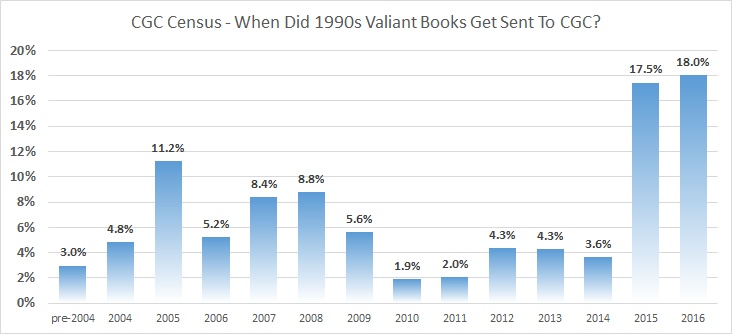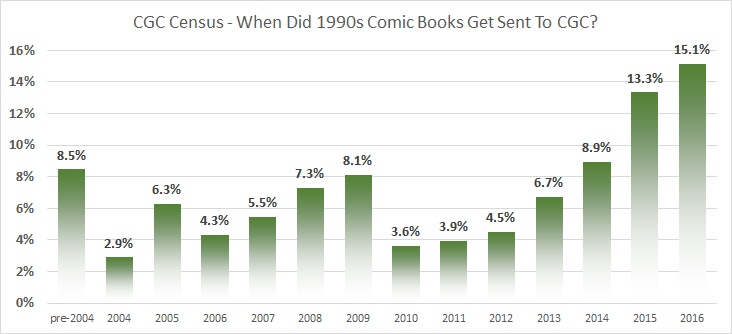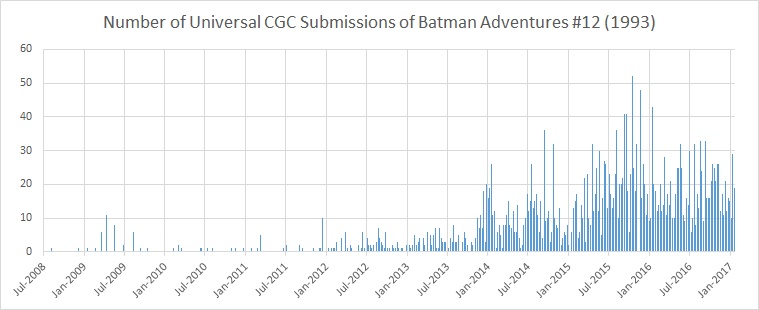After nearly 20 years of CGC grading (2000-2019), it is possible to see the percentages of grades assigned to comic books broken out by the ages of the comics (decades).
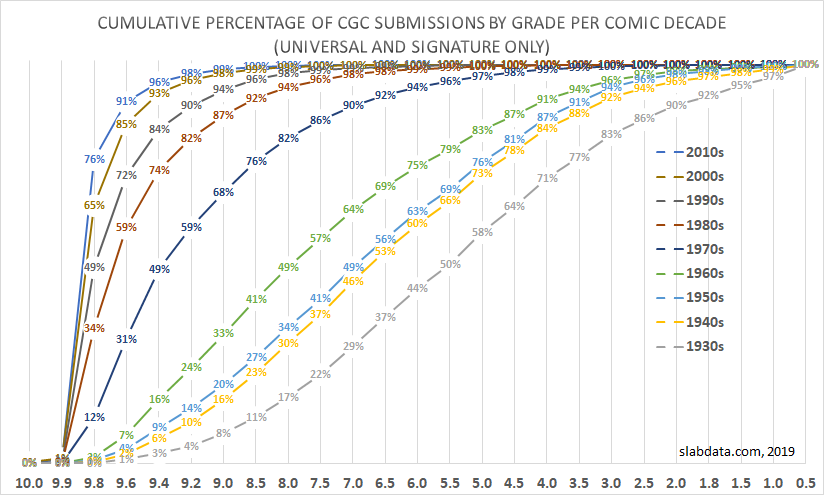
The graphic above shows that the percentage of higher grades decrease as the comic books get older, as we would expect, however the graphic does not accurately represent all comic books in existence. For example, judging from the numbers shown, it could be assumed that 49% of comic books from the 1960s are CGC 8.0 or higher.
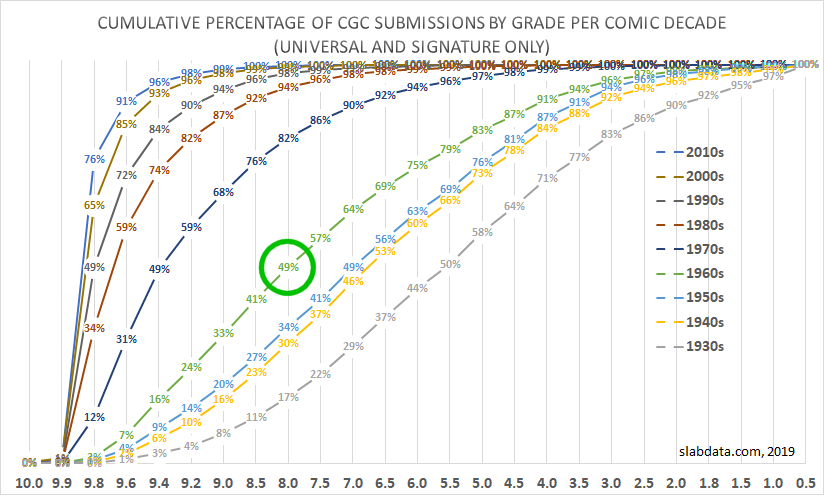
However, assuming that 49% of comic books from the 1960s are CGC 8.0 or higher is not even close to accurate. What the 49% represents is that 49% of comic books from the 1960s which have been graded by CGC have been 8.0 or higher. The key factor is that these books have been graded by CGC, that is, someone selected the books to be graded, prepared the books for grading, and paid the costs of grading. There are many comic books for which CGC grading is hard to justify, due to the costs of CGC grading.
While any comic book can be graded by CGC, it is hard to understand why someone might pay $27, not including the costs of shipping, to have CGC grade and encapsulate comics which do not sell for at least $27. Most comic books do not sell for $27, including comic books from the 1960s, due to the condition of the comic or the lack of demand in the marketplace.
In order to better understand the condition of comic books from the 1960s, it would make sense to evaluate the CGC grades for comic books where all copies (regardless of condition) are worth submitting to CGC for grading. This scenario is most likely to occur with the highest valued comic books, where the difference in prices between even a CGC 0.5 and a CGC 1.0 are higher than the cost of CGC grading. For those comic books, the percentages of each CGC grade are a better representation (sample) of all copies in existence, rather than just the comics that are “CGC-worthy”.
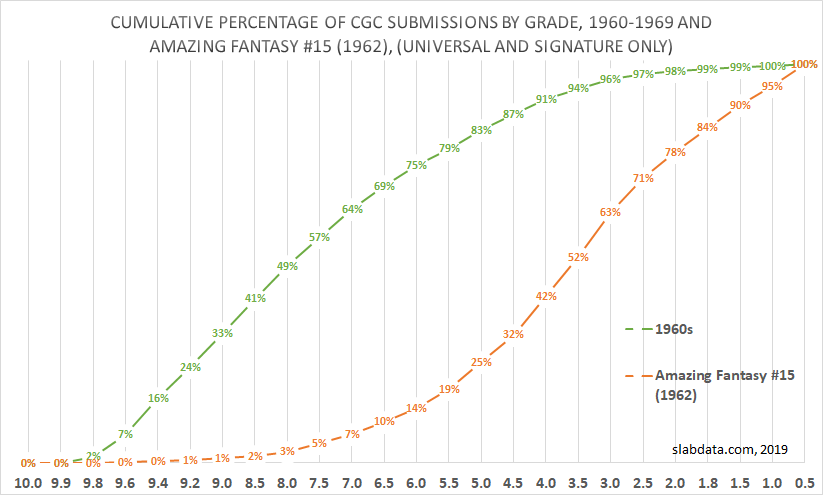
The difference is staggering. Rather than expecting 49% of comic books from the 1960s to be CGC 8.0 or higher, it can be seen that only 3% of copies of Amazing Fantasy #15 (1962) have been CGC 8.0 or higher. While we should not expect every comic book from the 1960s to have the same percentages, it is reasonable to expect that Marvel comics from 1962 would be quite similar to the grades for Amazing Fantasy #15, if all copies (regardless of condition) were submitted to CGC for grading. Rather than expect 8.0 to be the average condition for comics from the 1960s, it might be safer to expect to find half of all copies no better than 3.5 to 4.0.
While there is no way to know the percentages for each grade for every comic book in existence, we can get a better representation of what may be in existence by studying the CGC Census for comic books which are “CGC-worthy” (that is, justifiable of the CGC costs, regardless of condition) as the representative for comics of the same age with similar distributions and histories. Future articles on this website will examine other comics for which every copy is worthy of submitting to CGC, regardless of condition.
One thing to note: Because these are percentages, this entire article makes no mention or estimate for the actual number of each comic still in existence. This evaluation is reflecting the percentages of each grade, whether there are 100 or 1,000,000 copies.







